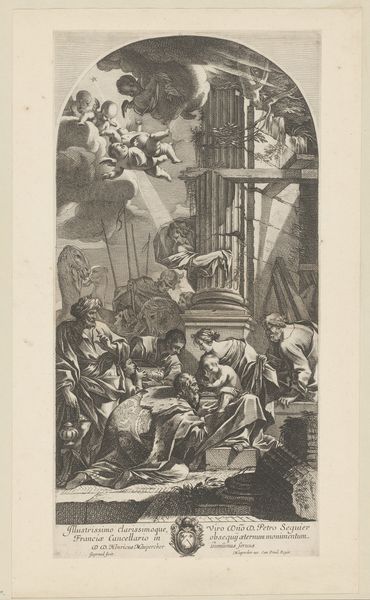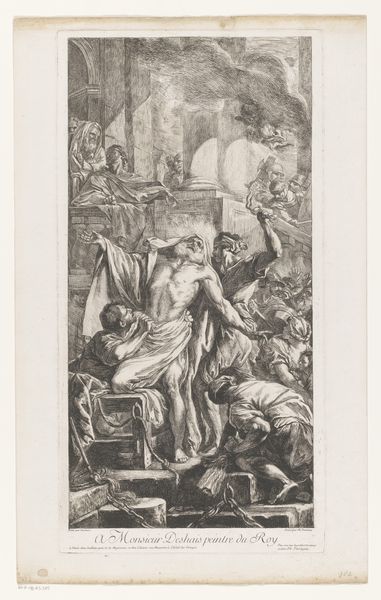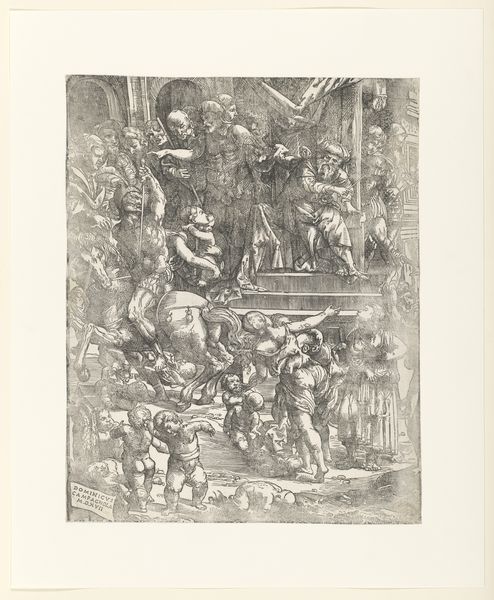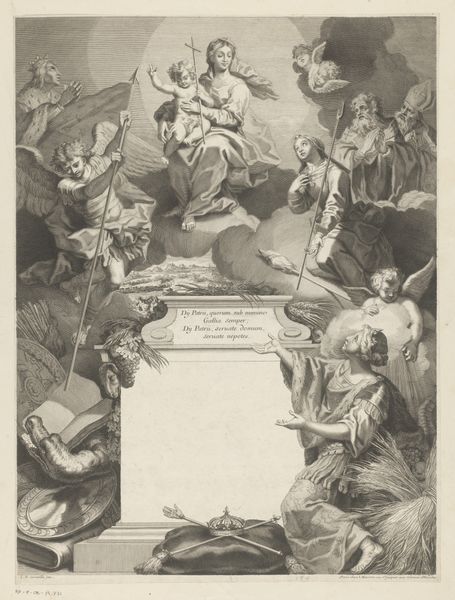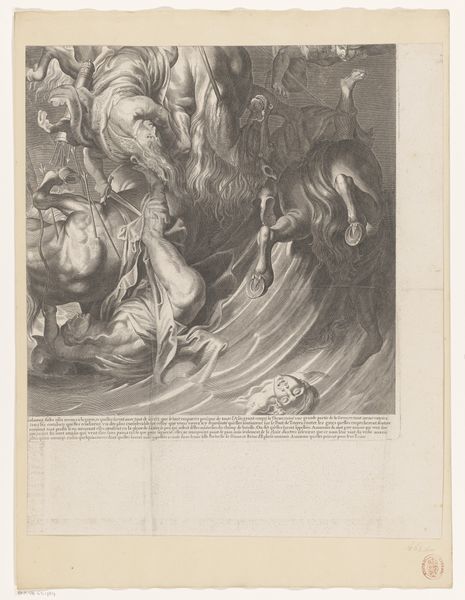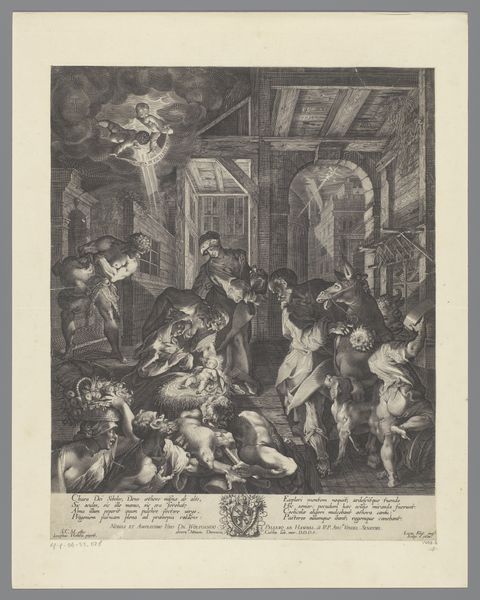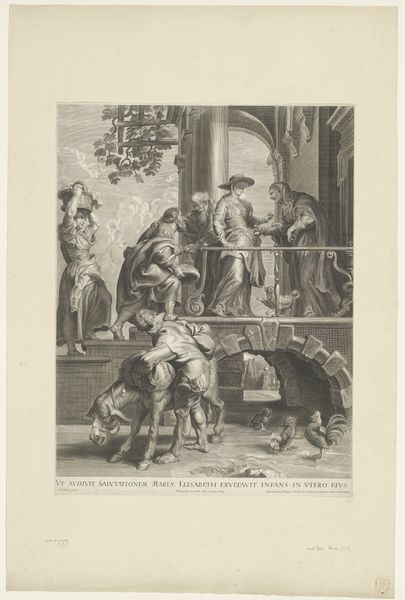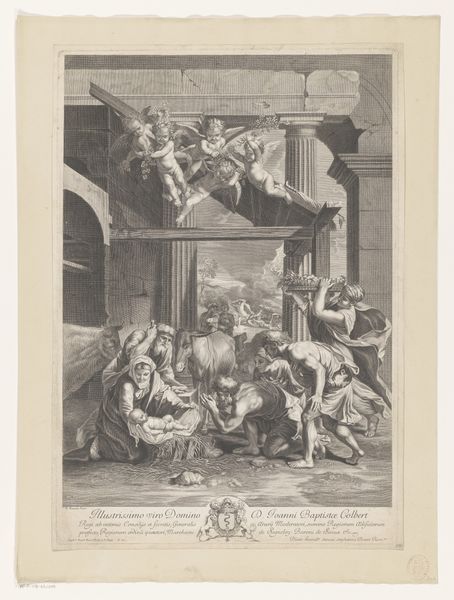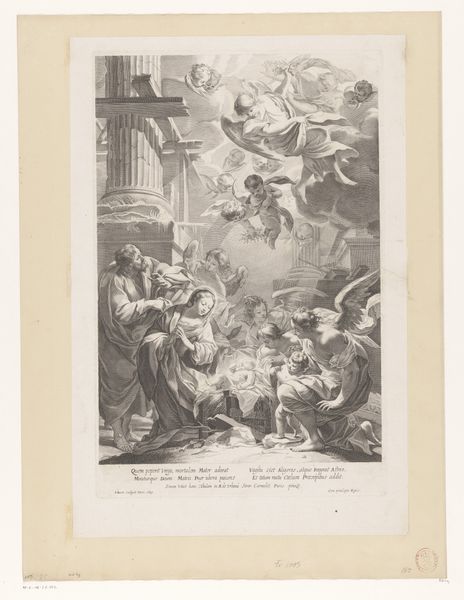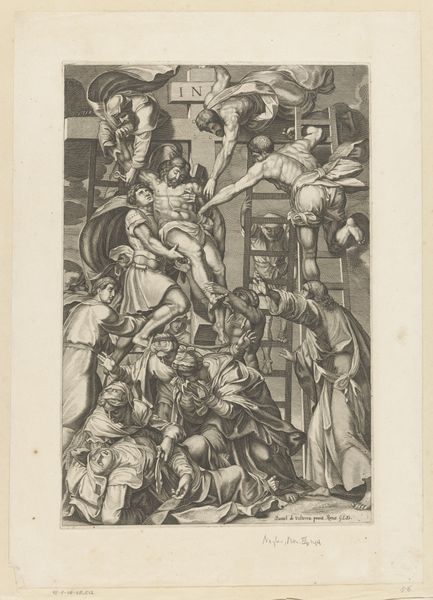
Allegorische voorstelling met Armand-Jean du Plessis hertog van Richelieu, in het gezelschap van Apollo en Neptunus (rechter bovendeel) 1616 - 1670
0:00
0:00
engraving
#
allegory
#
baroque
#
old engraving style
#
classical-realism
#
figuration
#
line
#
history-painting
#
engraving
Dimensions: height 588 mm, width 398 mm
Copyright: Rijks Museum: Open Domain
Curator: The Rijksmuseum presents "Allegorische voorstelling met Armand-Jean du Plessis hertog van Richelieu, in het gezelschap van Apollo en Neptunus (rechter bovendeel)" created between 1616 and 1670 by Grégoire Huret, executed in engraving. I’m immediately struck by the dramatic density of the composition. There’s a real sense of dynamism, even violence, playing out across the scene. Editor: Absolutely. I find this engraving dense and overwhelming, perhaps mirroring the turbulent political climate of the time. The sheer volume of allegorical figures vying for attention is almost dizzying, especially considering the realities of Cardinal Richelieu’s brutal, controlling power during his era. Curator: Yes, it’s interesting to observe how Huret utilizes classical realism and Baroque stylistic elements to convey this narrative. Look at the swirling lines, the dramatic lighting, and the exaggerated musculature of the figures, all typical of Baroque art. There’s a clear intention to evoke an emotional response from the viewer. Note, also, how the allegorical representations and the meticulous rendering create a hierarchical system, reflecting the power structures present. Editor: Indeed, if we consider that this image serves as an allegory celebrating Richelieu, one could argue that this heroic depiction glosses over the complexities and injustices perpetuated by his rule. Figures like Apollo and Neptune become tools for propaganda, subtly normalizing and idealizing a figure who actively suppressed dissent and consolidated power for the French monarchy, contributing to lasting inequalities. This connects strongly to history painting. Curator: Yet, technically, the line work itself, that precise engraving, speaks volumes about the skill involved and also communicates effectively the sense of grandeur intended by the Baroque style. We should note the artist's commitment to clarity and detail amidst all the thematic and social complexities we're discussing. Editor: I appreciate your formal assessment. However, understanding the political motives and socio-historical context surrounding the image enriches our understanding further; it forces us to question the inherent biases present and challenges the one-dimensional glorification. Curator: It gives us so much to contemplate, doesn’t it, to explore both the means and ends of artistic expression within its context. Editor: Precisely. The interplay between art and its reflection of and impact upon the political and social narrative allows for critical discussion.
Comments
No comments
Be the first to comment and join the conversation on the ultimate creative platform.
